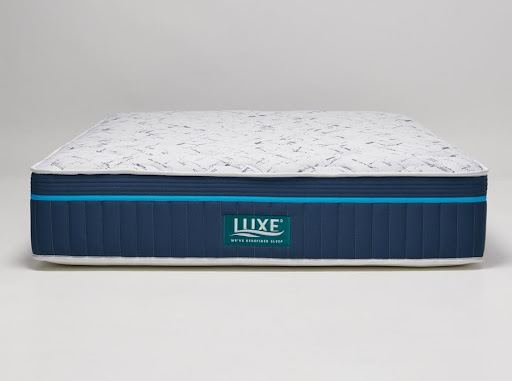When it comes to achieving quality sleep, the mattress you choose plays a critical role in supporting your body and influencing your overall health. Among the many features to consider, mattress firmness often sparks debate. Some sleepers swear by the solid support of a firm mattress, while others prefer the plush feel of a soft surface. The decision between a firm and soft mattress is not merely about comfort—it’s about how each option affects spinal alignment, joint pressure, muscle recovery, and long-term wellness. This guide delves into the detailed differences between soft and firm mattresses, including the extra firm mattress category, to help you determine what is better for your body and health.
Understanding Mattress Firmness and Its Role in Sleep Quality
Mattress firmness refers to the initial feel you experience when lying down—whether it’s yielding and soft, firm and steady, or somewhere in between. The firmness scale typically ranges from 1 to 10, with lower numbers indicating softer mattresses and higher numbers representing firmer surfaces. A soft mattress is generally rated between 1 and 3, medium firmness lands around 5 to 6, and a firm mattress typically scores between 7 and 8. An extra firm mattress ranks even higher, offering minimal cushioning and maximum resistance. Firmness affects how your spine aligns and how pressure points are managed, making it essential for choosing a mattress that promotes proper rest and rejuvenation.
Advantages of Sleeping on a Soft Mattress
Soft mattresses are designed for comfort and contouring. They cushion the body, allowing sleepers—especially those who sleep on their sides—to sink in slightly and experience relief in pressure-prone areas such as the shoulders, hips, and knees. These mattresses are typically built with thick comfort layers using firm mattress like memory foam or plush latex, offering a sensation of being enveloped. Soft mattresses can enhance circulation and reduce joint pain for certain individuals. However, for those with specific back problems or heavier body weights, a soft mattress might lack the necessary support, causing the spine to curve unnaturally and leading to stiffness or discomfort over time.
Why a Firm Mattress Might Be the Healthier Option
A firm mattress provides a more supportive sleeping surface that maintains a level alignment for the spine. Especially beneficial for back and stomach sleepers, a firm mattress keeps the hips and chest from sinking too deeply into the mattress, which helps reduce lower back strain. This kind of mattress promotes a more stable posture during sleep, supporting muscles and joints in a neutral position. A firm mattress also helps in better weight distribution, which can minimize tossing and turning. For people with back pain or those seeking a more structured sleep experience, a firm mattress often proves more effective in preventing discomfort and promoting spinal health.
Exploring the Benefits of an Extra Firm Mattress
For those requiring the highest level of support, an extra firm mattress offers unparalleled firmness. It is designed for sleepers who prioritize spinal alignment and posture correction. This mattress type is especially beneficial for stomach sleepers, people with orthopedic concerns, or heavier individuals who need a surface that doesn’t compress under body weight. An extra firm mattress minimizes motion transfer, reduces pressure buildup, and prevents misalignment that can occur with softer options. While it may initially feel rigid, many users report long-term improvements in back support and reduced muscle tension. It’s often recommended by health professionals for therapeutic purposes when soft or even medium-firm mattresses fail to provide sufficient support.
Comparing Soft and Firm Mattresses for Back and Joint Health
The impact of mattress firmness on back and joint health is significant. Soft mattresses offer cushioning that may feel luxurious at first, but over time, the lack of support can cause improper spinal alignment, particularly for those who sleep on their back or stomach. This misalignment can lead to chronic discomfort or aggravate existing conditions like scoliosis or arthritis. On the other hand, firm mattresses, including the extra firm mattress category, provide structural support that encourages proper alignment and reduces pressure on the lumbar region. For people with joint issues, the right amount of firmness is key to relieving tension without creating new pressure points, making the choice a matter of careful balance rather than personal preference alone.
How Sleep Position Influences Mattress Firmness Needs
The ideal mattress firmness also depends heavily on your preferred sleep position. Side sleepers often benefit from a softer mattress that cushions the body and adapts to its natural curves. This helps reduce pressure on the shoulders and hips. In contrast, back sleepers generally require a medium-firm to firm mattress that supports the lower back and maintains an even spine. Stomach sleepers need even more resistance, making a firm or extra firm mattress the better choice to prevent the midsection from sinking, which can otherwise strain the neck and spine. Combination sleepers—those who change positions frequently—should look for a mattress that balances comfort and support across multiple firmness zones.
Material and Construction: The Hidden Factors Behind Firmness
The materials used in a mattress can alter the way its firmness is perceived. Memory foam, for instance, tends to conform closely to the body, which can make a firm mattress feel slightly softer while still offering good support. Latex offers more bounce and a firmer feel, even at medium levels of firmness. Innerspring mattresses, constructed with coils, usually feel firmer and provide greater airflow, which is an added bonus for hot sleepers. Hybrid mattresses combine the benefits of foam and springs, allowing for firm or extra firm support with a touch of contouring. Knowing what materials are used helps consumers predict not just how a mattress feels on the surface, but how it supports their body throughout the night.
Conclusion
In the debate between firm vs. soft mattresses, the best option ultimately comes down to your body type, sleep style, and health priorities. A soft mattress may provide comfort and pressure relief for side sleepers and lighter individuals, but it might fall short in terms of spinal support. A firm mattress, by contrast, offers structural alignment and better distribution of weight, promoting healthier sleep for back and stomach sleepers. For those needing maximum support, an extra firm mattress can be a transformative choice, particularly for orthopedic or postural concerns. By understanding how each firmness level affects your sleep and overall health, you can confidently choose the mattress that supports both your comfort and long-term well-being.



